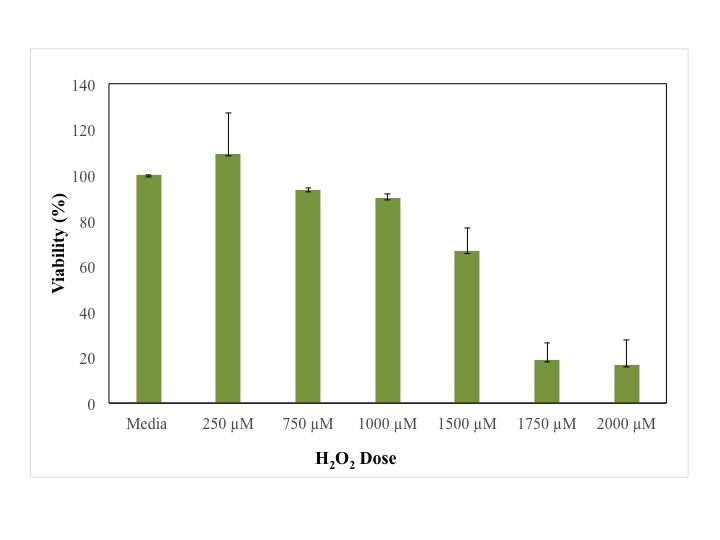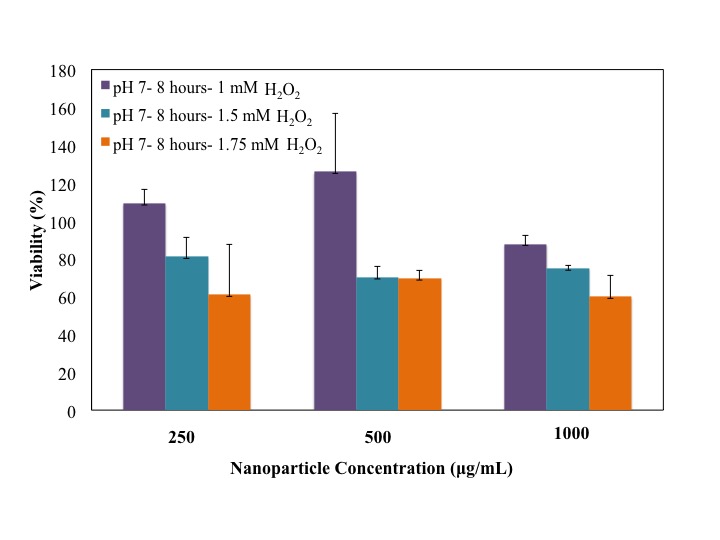The generation of various types of reactive oxygen species (ROS), such as the superoxide anion (O2-.), the hydroxyl radical (•OH), and hydrogen peroxide (H2O2), are very common in aerobic species since they are produced as byproducts during mitochondrial electron transport. Recently, many research groups have started to investigate the potential of nanoscaled materials with antioxidant properties like rare earth oxide nanoparticles, fullerenes and carbon nanotubes. As one of the most novel nanoparticle chemistries, nanoscaled cerium oxide has proven to be a promising candidate for numerous biological applications. Recently it has been reported that nanoceria can scavenge reactive oxygen/nitrogen species, including the superoxide radical, hydrogen peroxide and hydroxyl radicals due to its unique ability to switch its oxidation state from Ce+3 to Ce+4. For these reasons, the objective of the present study was to evaluate the potential use of the antioxidant activity of surface modified cerium oxide in rescuing human dermal fibroblast (HDF) cells in the presence of hydrogen peroxide (H2O2).
Ceria nanoparticles were synthesized from aqueous solutions of cerium nitrate and dextran. These solutions were added dropwise to 6 mL of a 30% ammonium hydroxide solution while stirring for 24 hours at 25οC. The synthesized particles were characterized in terms of their size via Transmission Electron Microscopy (TEM). Cytotoxicity (MTS) assays were carried out with HDF cells for 1 day in culture using DMEM, 10% FBS and a 1% penicillin-streptomycin solution. Cells were seeded at a density of 5,000 cells/well, allowed to adhere for 24 hours and the following day, in order to determine the cyto-protective function of particles, cells were preincubated with ceria at 250, 500, 1000 µg/mL concentrations at pH 6 and pH 7 for 2, 4, 8, 16 and 24 hours. Following pre-incubation, cells were treated with different (1 mM, 1.5 mM, and 1.75 mM) H2O2 concentrations for another 24 hours. After 24 hours of incubation, the MTS assay for cell viability and the carboxy-H2DCFDA assay were used to quantify ROS generation. Results were compared with cells cultured with 1 mM, 1.5 mM, and 1.75 mM H2O2 only. All experiments were completed in triplicate and repeated at least three times.
0.1 M dextran coated, sub 5 nm cerium oxide nanoparticles (DCN) were synthesized, and utilized to rescue HDF cells. Cells were rescued when they were pre-incubated with 0.1 M DCN before being exposed to the non-specific ROS source H2O2 in a pH, time and concentration dependent manner. Results suggested that particles at pH 7 are much more active ROS scavengers compared to particles at pH6, and as pre-incubation time increased up to 8 hours, its capacity to scavenge H2O2 was enhanced. ROS assay results suggested that the viability of the cells were correlated with the ROS amount that the cells produced. 0.1 M DCN caused a decrease in ROS generation in the presence of non-specific ROS.
Sub 5 nm dextran coated ceria nanoparticles were synthesized and cultured with HDF cells which were treated by cytotoxic reagents. The results showed that ceria treated cells were able to recover from the oxidative damage /cytotoxicity exerted by the drugs which suggests that ceria nanoparticles may act as antioxidants within the body.


Dr. Hilal Yazici is supported by TÜBİTAK – BİDEB, International Postdoctoral Research Scholarship Programme (Programme Number: 2219). The authors also thank Northeastern University for funding.